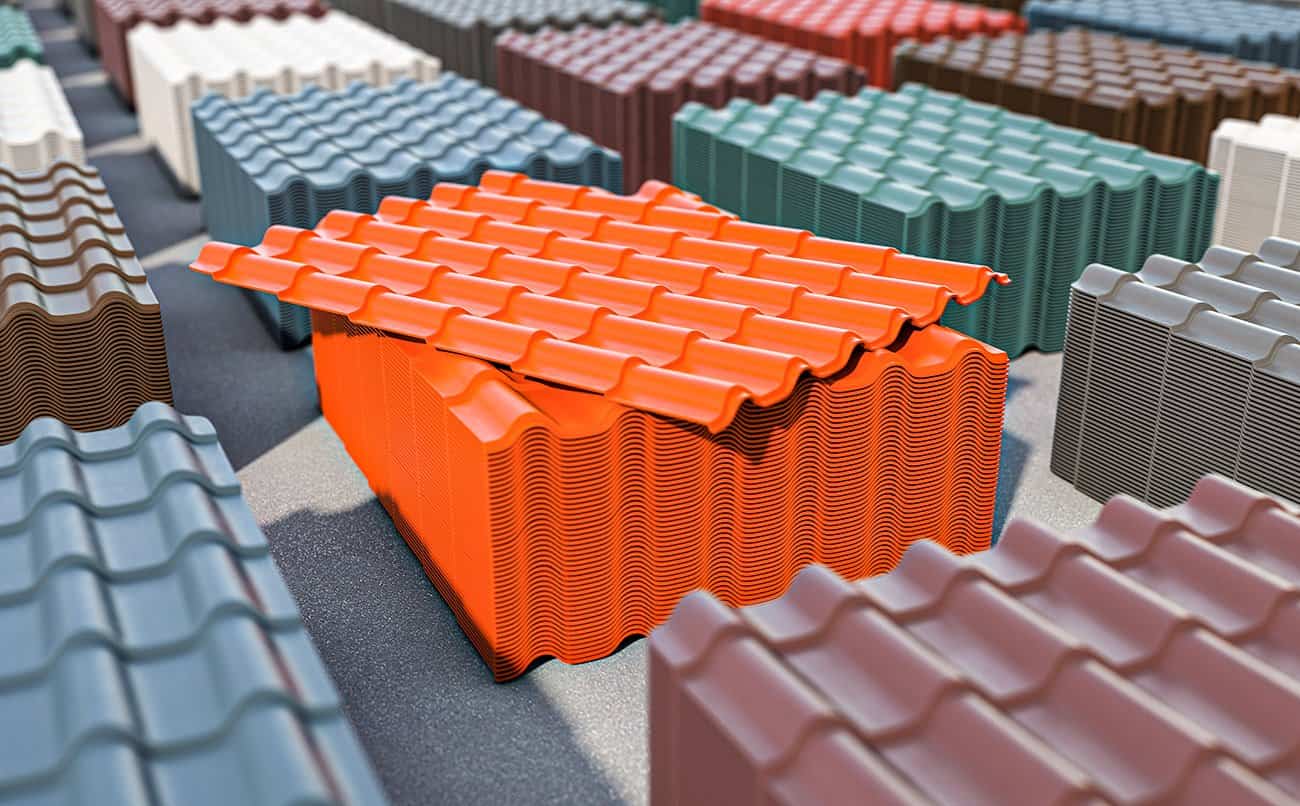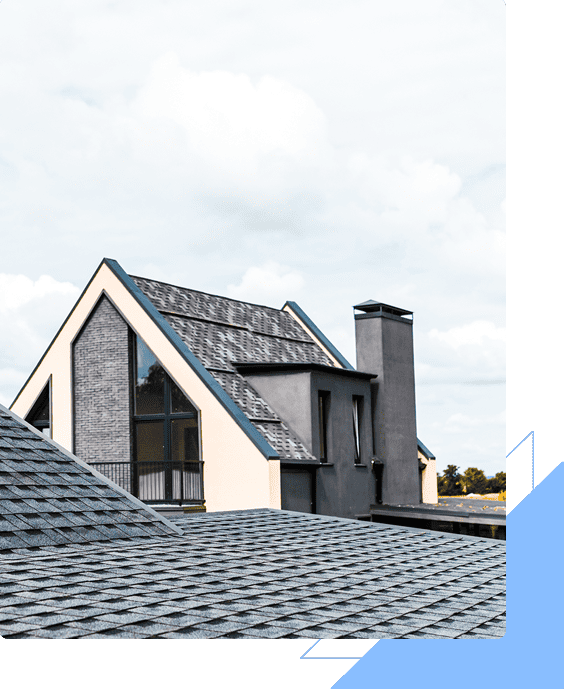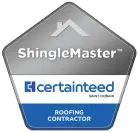Roofs are one of the most important components of a building, providing protection from the elements. They come in many different forms and styles, each with their own advantages and disadvantages.
This article will compare various types of roofs to help you determine which is right for your needs. The type of roof chosen can have an effect on energy efficiency, maintenance requirements, durability and cost.
Factors such as climate and design should also be taken into consideration when selecting a roofing system. By taking all these factors into account, this article will provide guidance that can aid in making an informed decision about which type of roof best suits your individual circumstances.
Asphalt Shingles
Asphalt shingles are a popular roofing material due to their cost-effectiveness, ease of installation and wide range of design options.
Asphalt is one of the most commonly used materials for roofs in North America, making it highly accessible when compared to other types of materials and therefore often more affordable.
The average asphalt shingle costs between $75 – $150 per square foot installed depending on factors such as geographic location, complexity of the project and quality of the product.
Installation can be done by experienced professionals or DIYers with basic knowledge.
For professional installers, the process involves laying out self-adhesive underlayment before installing each row of shingles from bottom up until they reach the peak.
Depending on size and complexity, an average job takes two to four days to complete.
Although there may be some additional labor involved if you want certain patterns or design elements that require cutting individual shingles into different shapes and sizes.
All in all, asphalt shingle installation is relatively easy compared to other materials like metal or wood shakes which require specialized tools and skillsets for proper installation.

Metal Roofs
The usage of metal roofs is becoming increasingly popular due to their long-term durability and energy efficiency. Metal roofing materials are lightweight, durable, and resistant to weather conditions such as hail, wind, snow, and fire. Additionally, they require little maintenance or repair over the years compared to other roofing options.
Metal roofs also offer great energy savings when compared with traditional asphalt shingle roofs. They reflect solar radiant heat from the sun which means less cooling costs in summer months and less heating costs in winter months. This feature makes them an ideal option for many people looking for a cost effective way to reduce their utility bills each month.
Furthermore, metal roofs can last much longer than traditional asphalt shingle roofs so there is often an investment up front that pays off in the long run due to fewer replacement cycles required over time. It should be noted however that some types of metal used do not hold up well in coastal areas where salt water corrosion may occur more quickly than inland areas.
Clay And Concrete Tile
The advantages of clay and concrete tile roofs extend beyond just fireproofing. While they are a safe choice for preventing fires, these types of roofs offer considerable aesthetics as well.
The colors and textures available with tile allow homeowners to customize the look of their roof while also adding a unique character to any property. From traditional red tiles to more modern shades like blue or green, there is no shortage of options when it comes to expressing your home’s personality through its roof.
Tile roofs can also be extremely durable, lasting up to 50 years in some cases if properly maintained. In addition, tile doesn’t require much upkeep; aside from occasional cleaning after storms or heavy wind events, the only maintenance required is occasionally checking the integrity of flashing around vents and chimneys.
Ultimately, those who choose this type of roof will enjoy increased safety from fire hazards as well as added beauty that enriches their home’s exterior design.
Wood Shingles And Shakes
Wood shingles and shakes are two popular roof types, the main difference being that shakes are split from a block of wood while shingles are sawn. Shakes tend to be thicker than shingles, making them more durable but also typically more expensive in terms of installation costs.
They also require regular maintenance such as re-staining or coating with preservative to protect against water damage and rot. In comparison, wooden shingle roofs have lower installation costs due to their lighter weight but they generally need more frequent repair and replacement than shake roofs.
Both materials come in a variety of colors and styles giving homeowners plenty of options for an aesthetic look that complements their home’s exterior design. When deciding between these two types of wood roofs, it is important to consider factors like cost, durability and maintenance requirements depending on one’s budget needs and desired longevity of the roof.
Synthetic Roofing
Wood shingles and shakes are popular among homeowners for their rustic charm, but synthetic roofing is becoming increasingly more attractive as it offers greater durability.
Synthetic roofs can be made from a variety of materials, such as polymer-based or rubberized asphalt. This type of roof provides exceptional performance in extreme weather conditions while being flexible enough to contour any roofline without compromising its structural integrity.
Furthermore, the material used in these roofs has improved significantly over time with better waterproof capabilities that protect homes during severe storms and heavy rains.
The environmental impact of using synthetic roofing is also beneficial when compared to wood shingle and shake options. Most synthetics contain recycled content which reduces greenhouse gas emissions associated with manufacturing processes and ultimately makes them eco-friendly alternatives.
Additionally, some varieties are energy efficient, providing additional savings on heating bills due to insulation properties within the material itself. In addition, they require very little maintenance beyond occasional cleaning; this decreases the amount of resources needed for upkeep over time.
Synthetic roofing has come a long way since first introduced onto the market decades ago, offering homeowners reliable protection from unexpected weather patterns along with sustainable construction benefits that make a positive difference in our environment.
Green Roofs
The advantages of green roofs are vast, with environmental sustainability and eco-friendliness being two key benefits. Green roofing systems go beyond simply providing insulation and soundproofing; they also provide an aesthetically pleasing environment that can help to reduce the amount of rainwater runoff from a building.
This is where the concept of rainwater harvesting comes in – by utilizing vegetation on top of a traditional roof structure, such as succulents or grasses, it’s possible to capture more water than would be collected through conventional drainage methods.
In addition to this vital function, green roofs offer additional positive qualities such as improved air quality due to increased oxygen production and carbon dioxide absorption. They also act as natural temperature regulators when exposed to direct sunlight, which helps keep buildings cool during summer months while still allowing them to retain warmth in winter.
Furthermore, green roofs can serve as habitat for a wide range of animal species including insects, amphibians and birds. As such, these structures not only benefit their immediate surroundings but also promote greater biodiversity across larger ecosystems.

Flat And Low-Slope Roofs
Green Roofs have been gaining popularity in the past decade due to their environmental benefits and aesthetic appeal.
However, flat and low-slope roofs are still a viable option for many buildings.
Flat and low-slope roofs offer several advantages beyond cost savings compared to green roofing systems.
For example, they can be designed with energy efficiency in mind; a light colored membrane reduces heat island effect which is beneficial from an environmental standpoint.
Additionally, these roofs require less maintenance than sloped or green roofs so the long term costs are lower.
Energy efficient materials such as reflective coatings can also help reduce cooling costs associated with air conditioning during hot summer months.
Furthermore, flat and low-slope roofs can provide more usable space compared to other types of roofing systems since there is no need for additional support structures that come with higher slopes.
Flat and low-slope roofs therefore remain popular options among builders looking to save money while maintaining good performance standards when it comes to environmental impact and energy efficiency.
While not as aesthetically appealing as some of the alternatives available today, they remain a reliable option for those on tighter budgets or who simply prefer something simpler.
Conclusion
The roof of a home is an important structural component and plays an integral role in the overall protection it provides.
There are several different types of roofs to consider when selecting one for your home, each with its own unique advantages.
- Asphalt shingles offer a low-cost option that can be installed quickly.
- Metal roofs provide longevity and increased fire resistance.
- Clay and concrete tiles bring colors and textures to enhance curb appeal.
- Wood shingles and shakes give homes a rustic charm.
- Synthetic roofing offers durability at lower costs than natural materials.
- Green roofs create gardens on top of buildings.
- Flat or low slope roofs are ideal for climates with minimal rainfall.
Each type of roof has something special to offer homeowners who are looking for the best solution for their individual needs.















